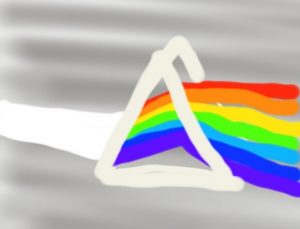Trying to work out what you need to know and which information is most relevant at a particular time is like trying to hit a moving target. Not impossible but many factors play a role in the result. We all know that things change, yet we can fortify ourselves by becoming aware of which factors can impact us either directly or indirectly. Even factors out of our control can be planned for and risks mitigated.
The idea of a “Need to Know Framework” is actually an acknowledgement of how things used to be. The traditionally small groups of people working and existing together, organically gave rise to a sharing of information and knowledge, each person knew what the other person was doing and a network of awareness of the whole developed naturally. In the modern workplace the scale actually prevents the easy flow of information between indirectly but still connected groups. The recent ideas of tribes, regularly scheduled meeting and intranets etc. all are modern devices to try and replace the paradox of increasing isolation in larger groups.
So the only way forward is to begin at the level of the individual and instil a sense of “the Whole”. It is only when we appreciate the perspectives and requirements of others in the group that the greater good of “the Whole” moves forward. Some of the greatest advances in human history have only occurred when a discipline is examined from another perspective.
The need to understand the interconnections and dependancies that impact our tasks, is crucial to the understanding of the environment or “ecosystem” that our body of work will exist in over time.
It is essential for us to examine and determine which information and facts we will require. The resulting maturity that will develop, if we attain this perspective will be essential in helping us to reach our goals. The byproduct of striving to this end will be an increase in “Transparency” and a Need to Know Framework where each piece of information, can easily be prioritised into impact and according to our specific needs.
So how do can we get to this point?
Well it is only when we realise that just focusing on the immediate and specific task at hand, although seemingly efficient is actually detrimental to the ultimate whole. When any one thing is focused upon solely the result is always that the whole suffers. This does not mean that concentration on a particular task is bad but that any task no matter how small must and should be considered as part of a larger system. It doesn’t matter if your API is perfection, well coded, efficient and a masterpiece if it can not interact with its larger ecosystem.
So how do you generate a Need to Know Framework” ?
The inspiration for this comes from newtonian physics, in particular Refraction of light through a Prism.
Using the PRISM we can utilise the colours as indicators of the Importance, Directness and Impact of Information.
Centrally at Level 1 (RED) would be the direct and immediate information required for you to do the task, and the task only with little or no appreciation of where your task fits into the larger landscape. This is the equivalent of just in time management.
Next at Level 2 (ORANGE) is the knowledge required to perform your task and deliver it.
Level 3 (YELLOW) is information which helps you locate and position the task at hand, within a slightly broader framework. Such as knowing how it will impact and interact with its immediate neighbours or dependences.
Level 4 (GREEN) is information which is not usually considered required but when obtained frames and allows the project or task to comfortably sit within the broader landscape. This type of information aids in allowing you to grasp the interconnection between your task or project and those not directly involved, the first cousins to your work.
Level 5 (BLUE) this level of information frames you task or project in the broader environment, with awareness of interconnection and nuance between the up stream and down stream relationships.
Level 6 (INDIGO) this level like the colour is between BLUE and VIOLET, the interconnection and interdependencies of all the tasks and projects, yours included and the information required to distill the over arching “5 Year Plan” or Vision..
Level 7 (VIOLET) this is the highest level of separation from your work, and as such is not often seen as essential or even required. Yet, it is the guidance under which all your tasks and projects have been organised to function within. This is the “5 Year Plan” or Vision developed from the Level 6 (INDIGO) information when evaluated and seen in the light of the company in the Global Economic and Social Ecosystems.

